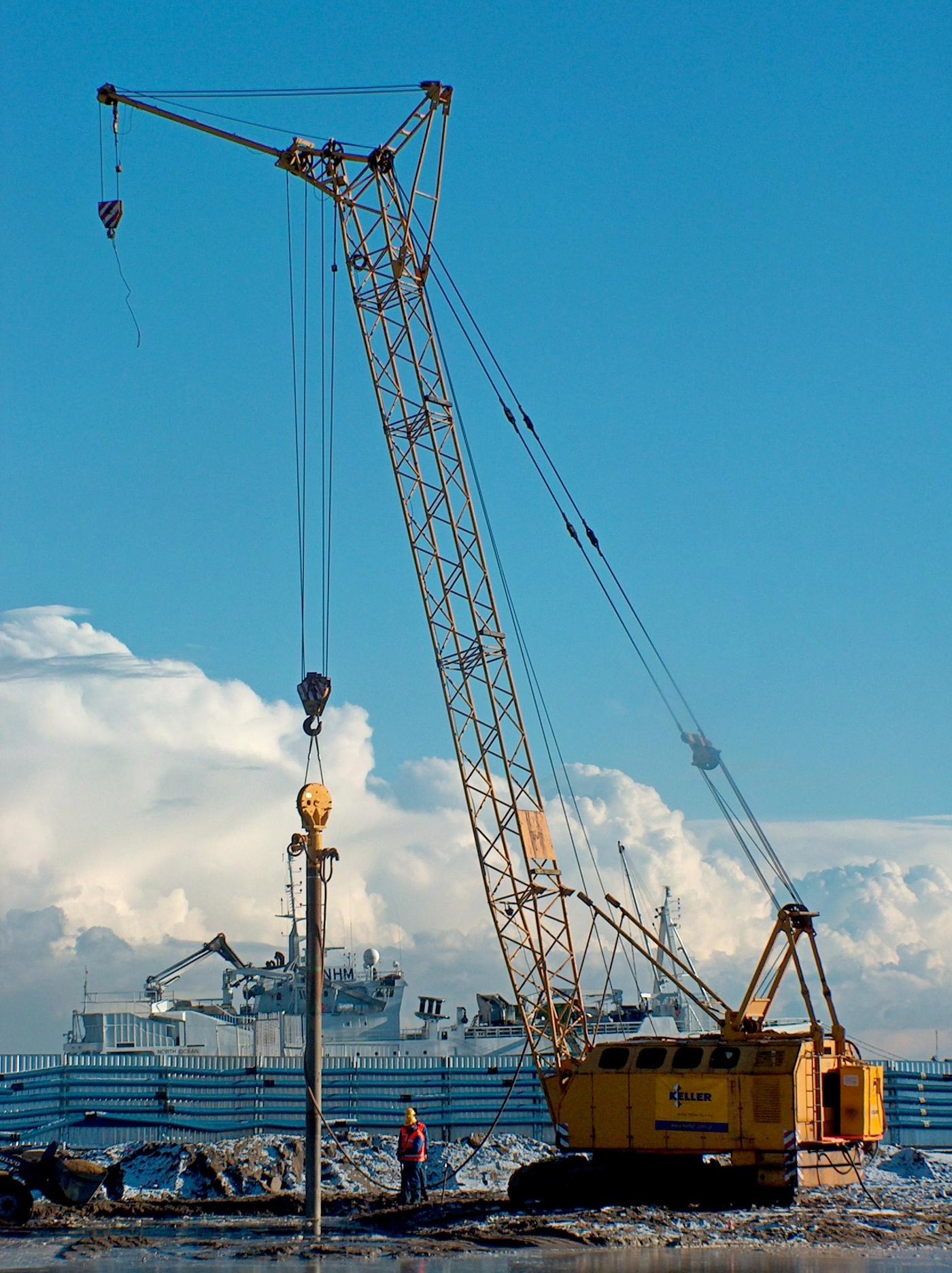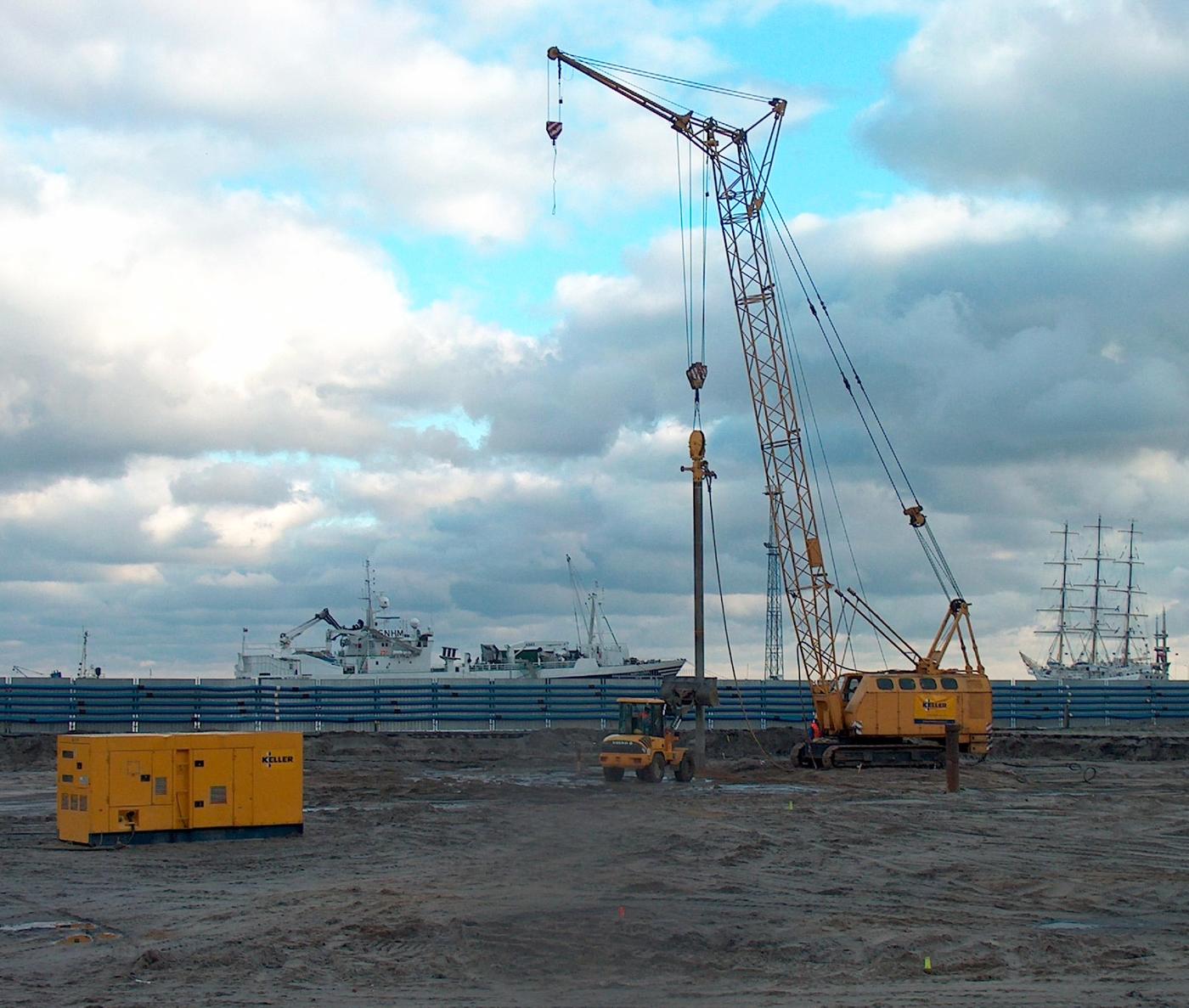The Sea Towers residential building, located in the city centre, directly at the President's Quay, consists of 2 towers with 28 and 36 storeys. The higher tower together with the antenna is 138 m high.
The project
The building was founded on a reinforced concrete slab with a thickness of 0.6 to 2.4 m, based directly on the reinforced soil and on a system of three independent diaphragm wall assemblies, reaching from 11.5 to 14.2 m below the bottom of the slab. The characteristic pressures under the foundation slab are about 500-600 kPa in the area of towers and 40-150 kPa under the service part. Due to the necessity to include the subsoil under the slab, the compaction of sandy soils using the vibroflotation method was designed and executed to the depth from 5 to 8 m below the working platform (+1.6 m).
The challenge
In the area of the building's foundation, there are mainly non-cohesive grounds, mostly fine and medium sands, with local miracles. At a depth of about 35-38 m there is a layer of clay with a thickness of about 0.5-3 m. The strip of land adjacent to the President's Quay, about 50 m wide, was used during the construction of the port of Gdynia for the prefabrication and launching of reinforced concrete crates by means of the ejection method. For this reason, the area is covered with rrefull land, with a degree of compaction from 0.25 to 0.50. Lower is the sand in the compacted state (ID=0.7). The area of soil reinforcement was divided into three zones where the depth of compaction reached the order of -3.4; -4.4 and -6.4 m p.p.m. respectively.
The solution
The soil was compacted with the help of the Keller system's deep vibrators, freely suspended on the crane, which were plunged into the ground to the planned depth under the influence of vibrations and gravity. No water or air scrubber was used. A total of 1112 points were compacted.
A single S-type vibrator of 120 kW, 230 kN centrifugal force, 30 Hz vibration frequency and about 20 mm vibration amplitude was used for the compaction points in the 3x3 m grid, and two M-type vibrators of 55 kW, 146 kN centrifugal force, 50 Hz vibration frequency and about 8 mm vibration amplitude were used for the compaction points in the 2x2 m grid, suspended on the crane beam. During deep compaction, aggregate with 0-32 mm grain size, dust fraction content below 4% and U= d60/d10>3 index was added in the amount depending on the volume of funnels formed and the reaction of the substrate to compaction. A total of 2322 tons of aggregates were used for soil metering. The order of working level was controlled during the works. The average ground reduction after soil reinforcement was 19 cm, which directly indicates high effectiveness of the applied method of deep soil compaction.
The solution using the method of deep soil compaction was introduced as an alternative to the originally planned soil reinforcement with a system of 1312 jet grouting columns. This allowed to reduce the cost of soil reinforcement more than three times and to significantly accelerate the execution of works. The control tests and advanced calculations confirmed the validity of the solution implemented by Keller Polska.

